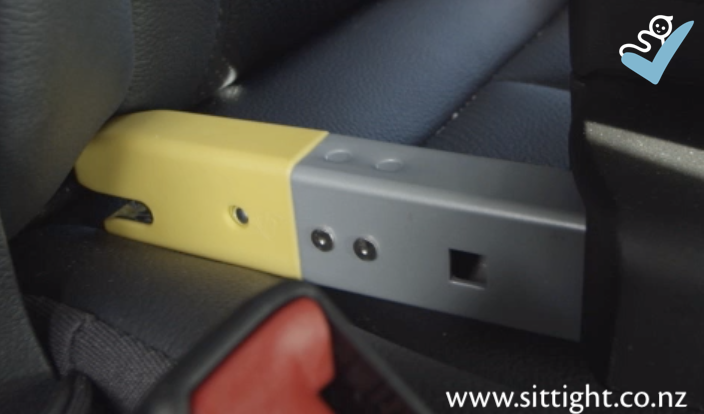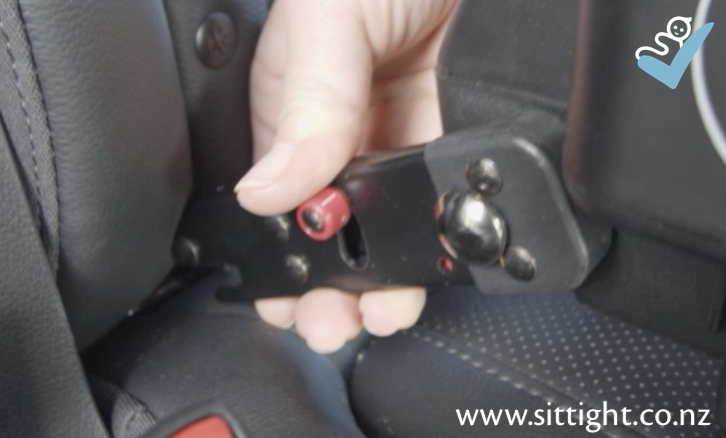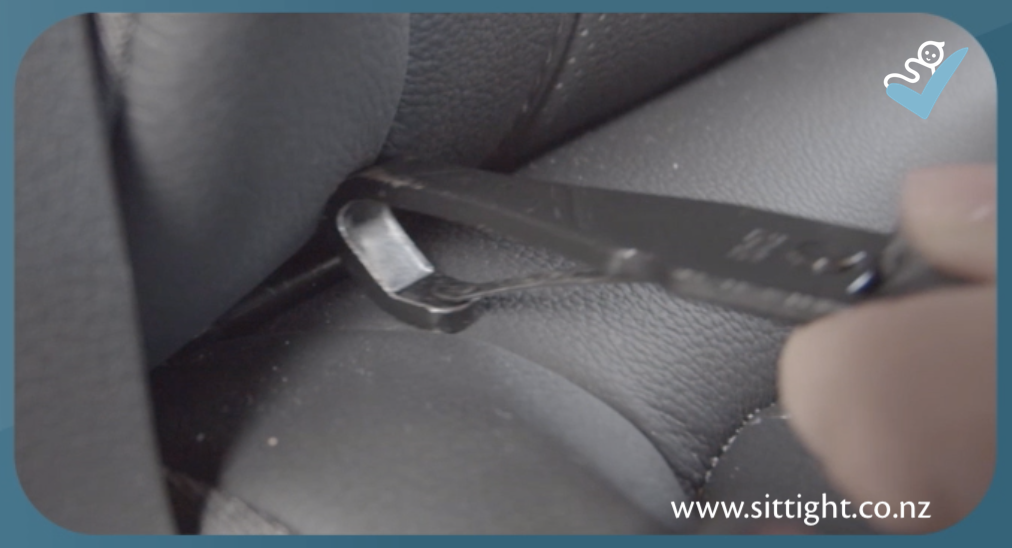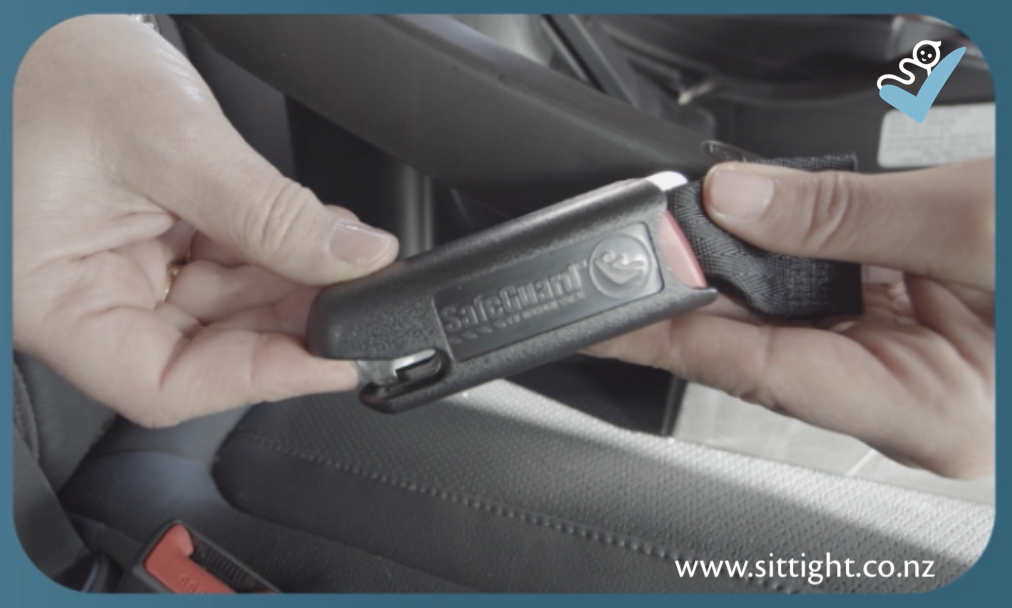When installing a child restraint, there are two methods available for installation. You can install using either the vehicle seat belt or a system using lower anchor bars in the vehicle. There are two names for this system in New Zealand, ISOFIX or LATCH. The name used will depend on the country and safety standard that the vehicle and restraint were manufactured for.
ISOFIX or LATCH?
Using lower anchors to install a child restraint was a concept devised in Europe in the late 1990s. The system was named “ISOFIX”. ISOFIX is the International Organization for Standardization standard ISO 13216. ISOFIX is the term used for the lower anchors:
- in vehicles manufactured for the European market;
- and the corresponding connectors on child restraints manufactured to one of the approved European safety standards.
Lower anchors were introduced to vehicles in the US in the early 2000s. For this market, the system was named “LATCH” – “Lower Anchors and Tethers for Children”. LATCH is the name used for:
- the lower anchors in vehicles manufactured for the US market;
- and the corresponding connectors on child restraints manufactured to the US safety standard, FMVSS213.
Using lower anchors to install child restraints became standard in Australia in 2015. In the Australian market, restraints are referred to as being “compatible with ISOFIX”.
There are other names used for this system in different regions worldwide, but in New Zealand we will only come across child restraints using the terms ISOFIX or LATCH.
Lower Anchors in Vehicles
The lower anchors are positioned in the vehicle’s seats. Most commonly they are found in the outer rear seats.
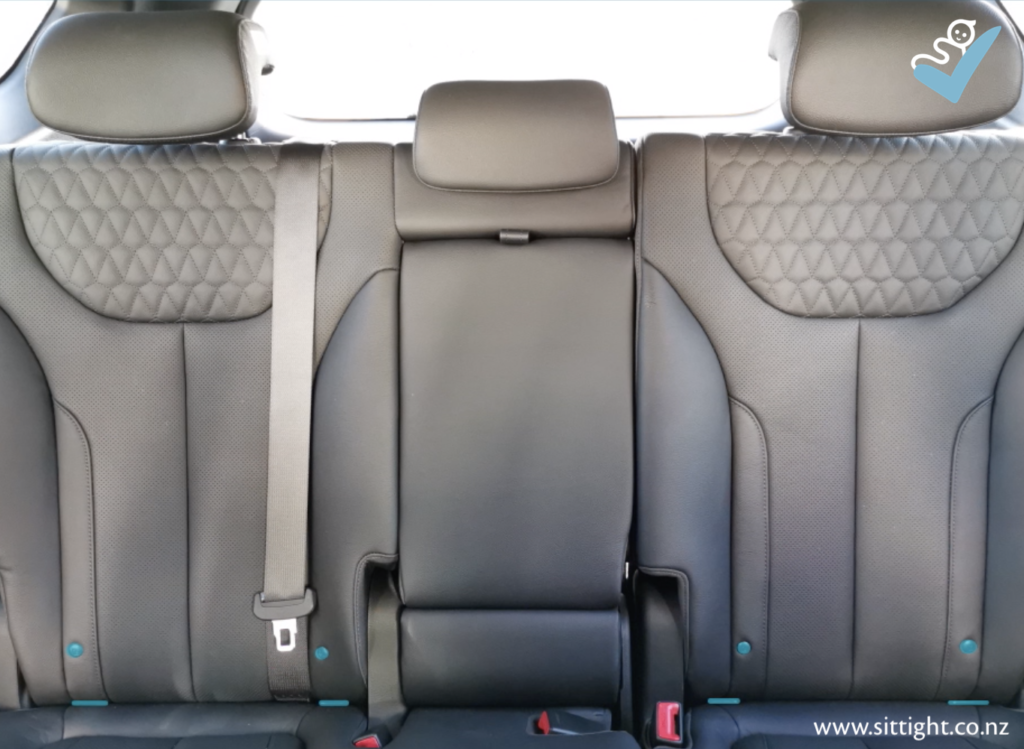
Lower anchors can sometimes be found in the middle rear or the front passenger seats, but both of these locations are far less common.
Not all vehicles have lower anchors. If a vehicle does not have lower anchors, a child restraint must be used which can be installed using the vehicle seat belt.
If a vehicle has lower anchors, they will be located between the vehicle seat base and back, in the seat “bight”.
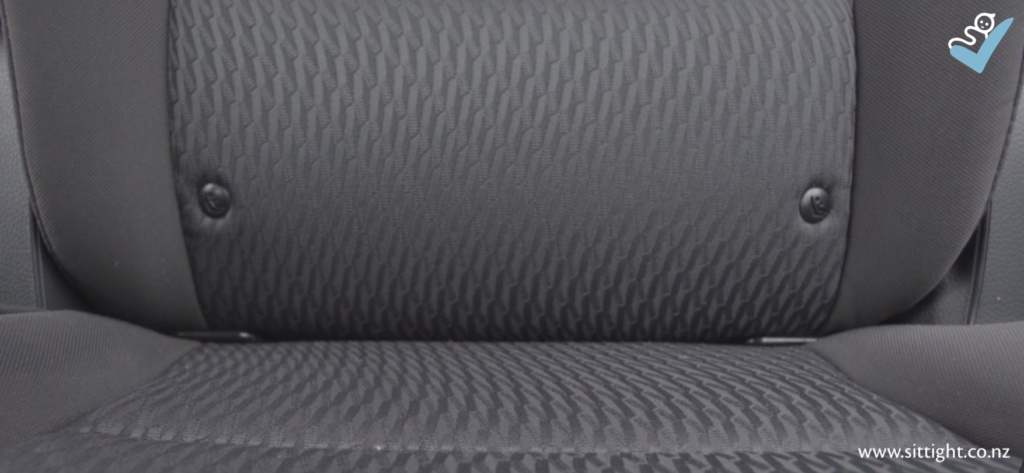
Most often there are two anchors per seat, one positioned towards each “edge” of the vehicle seat. Occasionally the lower anchor will be one bar running the length of the vehicle seat. This is uncommon and the vehicle’s user manual must be referred to for confirmation that this is a lower anchor.
Finding Lower Anchors in a Vehicle
A plastic dot or fabric flag on the vehicle’s upholstery often indicates the presence of lower anchors. Some vehicle manufacturers will also “frame” the lower anchors using plastic moldings. If a vehicle does not have any of these indicators, to manually check for the lower anchors simply slip your fingers in between the seat base and back and feel for the bars. If you locate these manually, it is best practice to refer to the vehicle’s user manual to confirm these are lower anchors.
The lower anchors in vehicles are used as the anchor points on which to attach the corresponding connectors on the child restraint.
ISOFIX or LATCH Connectors on Car Seats
Child restraints that are designed to be installed using the ISOFIX or LATCH systems will have connectors on them which attach to the lower anchors in the vehicle. Not all child restraints will have these connectors. Any restraint which does not have these connectors present is designed to be installed using the vehicle seat belt instead.
The connectors on the child restraint will differ depending on whether it has been manufactured for the ISOFIX or the LATCH system.
ISOFIX or Rigid LATCH Connectors
ISOFIX or Rigid LATCH connectors are rigid bars.
These are fixed in place or are folded away to extend into place as required. These connectors will have a “tooth” positioned at the end of the bar. When the bar is pushed up against the lower anchor, the “tooth” hooks over the bar and secures the restraint in place. To determine if there are further steps to be taken to ensure correct installation, the restraint’s instruction manual must be checked.
Flexible LATCH Connectors
Flexible LATCH connectors are designed as a form of a hook or other connector attached to both ends of a webbing strap.
This connector is pushed against, or hooked over, the lower anchor bar in the vehicle. Flexible LATCH connectors always require additional tensioning of the webbing strap to ensure the restraint is securely installed. The restraint’s instruction manual must be checked to ensure all steps have been taken to achieve a safe and correct installation.
Is ISOFIX or LATCH Safer than a Seat Belt?
The simple answer is no. Using lower anchors to install a car seat is no safer than using a seat belt if both methods result in an equally secure installation.
ISOFIX was designed to reduce the instances of incorrectly installed child restraints. Its purpose was to provide a method of installation that made it easier to achieve a secure, and therefore safe, installation.
A secure installation of a child restraint is always the goal. This can be achieved using either the lower anchors (with ISOFIX or LATCH connectors) or a vehicle seat belt. If a secure installation is achieved using either of these methods, both are equally as safe.
The safest restraint is the one that is installed securely and correctly, whichever method is used.
To follow NZ car seat law, you must always check a child restraint’s instruction manual to be sure it has been installed correctly.
ISOFIX or LATCH Weight Limit
When using lower anchors to install a child restraint, there are weight limits to be aware of. These must be checked in two places:
- the child restraint’s instruction manual;
- the vehicle’s user manual.
A child restraint’s instruction manual will state the weight at which a child will be too heavy to use the lower anchors to install it. This weight limit is commonly 18kg, but this is not always the case. If a child restraint is designed to be used beyond this weight limit, at that stage it would be installed using the vehicle seat belt.
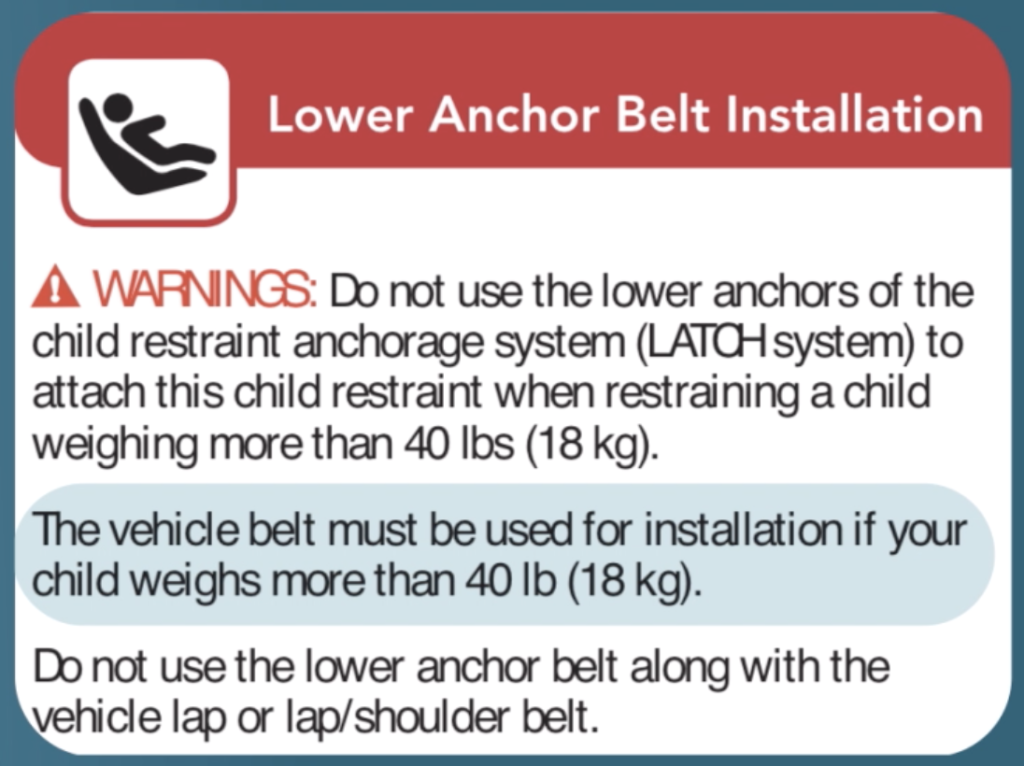
its weight limit when using the lower anchors to install.
The vehicle’s user manual must also be checked. It may state its own limit for the lower anchors, and this may be different to the child restraint’s limit.
If these two limits differ, you must follow the lower of the two.
Can You Use LATCH or ISOFIX and Seat Belt Together?
In all except very rare cases, the answer to this question is no. The lower anchors and the vehicle seat belt must never be used at the same time unless your child restraint’s manual specifically states this can be done, and this is very uncommon.
Unless a child restraint manufacturer has tested and approved the use of these two methods together, doing so would result in the car seat being used other than how the manufacturer has stated it can. This is illegal.
A child restraint must be installed using EITHER the lower anchors OR the vehicle seat belt. Never use both unless your manual specifically says this can be done.
Can you use LATCH or ISOFIX in the Middle Seat?
If a vehicle does not have lower anchors in the middle rear seat, it is not approved to install a child restraint in the middle position using one of the lower anchors from each side seat. This is called “borrowing” lower anchors. They are not designed to be used this way and therefore may not hold a car seat securely under the force of a crash.
A child restraint can only be installed using the lower anchors if these are in place for that specific vehicle seat.
You’re always welcome to make contact with us at SitTight to ask questions about the correct, safe and legal use of child restraints. Or you can follow us on Facebook or Instagram.
